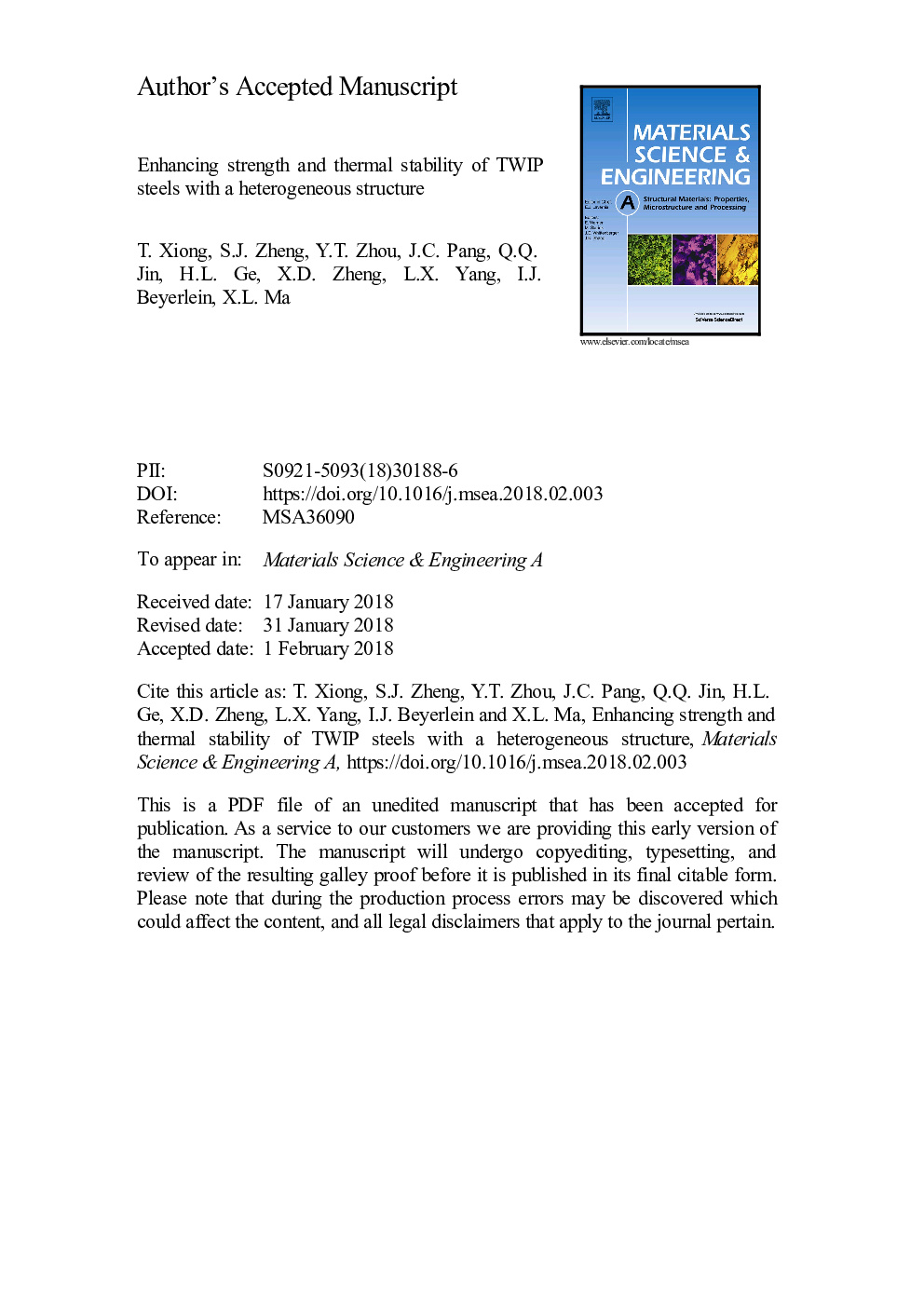| Article ID | Journal | Published Year | Pages | File Type |
|---|---|---|---|---|
| 7973050 | Materials Science and Engineering: A | 2018 | 23 Pages |
Abstract
Twinning-induced plasticity (TWIP) steels can exhibit high ultimate strength and ductility, but low yield strength and thermal stability. Here we approach this problem by introducing a heterogeneous microstructure comprised of soft, hard and thermally stable regions in a model composition of Fe-22Mn-0.6â¯C TWIP steel. This target microstructure is achieved via a three-step processing route: cold rolling to introduce nanotwin bundles, an aging treatment to transform highly defective regions to thermally stable pearlite nano-lamellae, and an annealing step for relatively large, ductile grains. We show that this microstructure generates a good balance between high yield strength, good ductility, high ultimate tensile strength, and good thermal stability. The main deformation mechanism of this unique heterogeneous structure is deformation twinning. The high thermal stability can be attributed to the transformation of the shear bands, introduced by cold rolling, into pearlite during the aging process, and into the composite of nanograined austenite and nanograined cementite formed during the subsequent isothermal annealing.
Related Topics
Physical Sciences and Engineering
Materials Science
Materials Science (General)
Authors
T. Xiong, S.J. Zheng, Y.T. Zhou, J.C. Pang, Q.Q. Jin, H.L. Ge, X.D. Zheng, L.X. Yang, I.J. Beyerlein, X.L. Ma,
